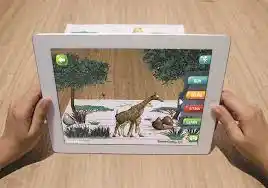Augmented Reality Applications in Education

Technological advancements have revolutionized the way we approach education.
Augmented Reality (AR), a technology that overlays digital content onto the real world, has gained significant attention for its potential to transform the learning experience.
Augmented reality applications in education are opening up new avenues for engaging, interactive, and immersive learning environments.
Let’s explore the various ways AR is being used to enhance education.
Interactive Learning Experiences
Augmented reality brings textbooks and educational materials to life by adding digital elements like 3D models, animations, and interactive simulations.
Students can explore complex concepts in a more engaging manner, making abstract ideas easier to comprehend.
For instance, in biology classes, AR can enable students to dissect virtual organisms without the need for physical specimens.
Virtual Field Trips
AR allows students to embark on virtual field trips to historical sites, museums, and landmarks from the classroom.
This not only eliminates geographical constraints but also provides a safe and controlled environment for learning.
History lessons can come to life as students “visit” ancient civilizations, walk through historical events, and witness important moments firsthand.
Hands-On Training
In technical and vocational education, AR offers practical training opportunities. Students can manipulate virtual objects and practice tasks that mimic real-world scenarios.
For example, aspiring mechanics can practice disassembling and assembling engines in a risk-free virtual environment before working on actual vehicles.
Language Learning
AR applications can enhance language learning by overlaying translations, pronunciations, and contextual information onto real-world objects.
Language learners can point their devices at objects around them to instantly learn vocabulary in context, making the learning process more interactive and memorable.
FAQs
What equipment is needed for using AR in education?
To use AR in education, you typically need a smartphone or tablet with a camera, along with compatible AR apps. Some educational institutions also invest in AR glasses for a more immersive experience.
Are there any privacy concerns with AR in classrooms?
Privacy is a valid concern. It’s essential to ensure that any data collected by AR applications is handled securely and that students’ privacy rights are respected. Schools should choose reputable AR apps and platforms with strong privacy policies.
How can teachers integrate AR into their lessons effectively?
Teachers can start by identifying topics that can be enhanced with AR, selecting appropriate apps or tools, and designing activities that encourage student interaction. AR should complement the learning objectives and not be a mere novelty.
Are there any challenges to implementing AR in education?
While AR offers exciting possibilities, challenges include the initial cost of technology, the learning curve for teachers and students, and the need for reliable internet connectivity. Overcoming these challenges requires proper planning, training, and ongoing support.
Also Read: Introduction to Quantum Computing




